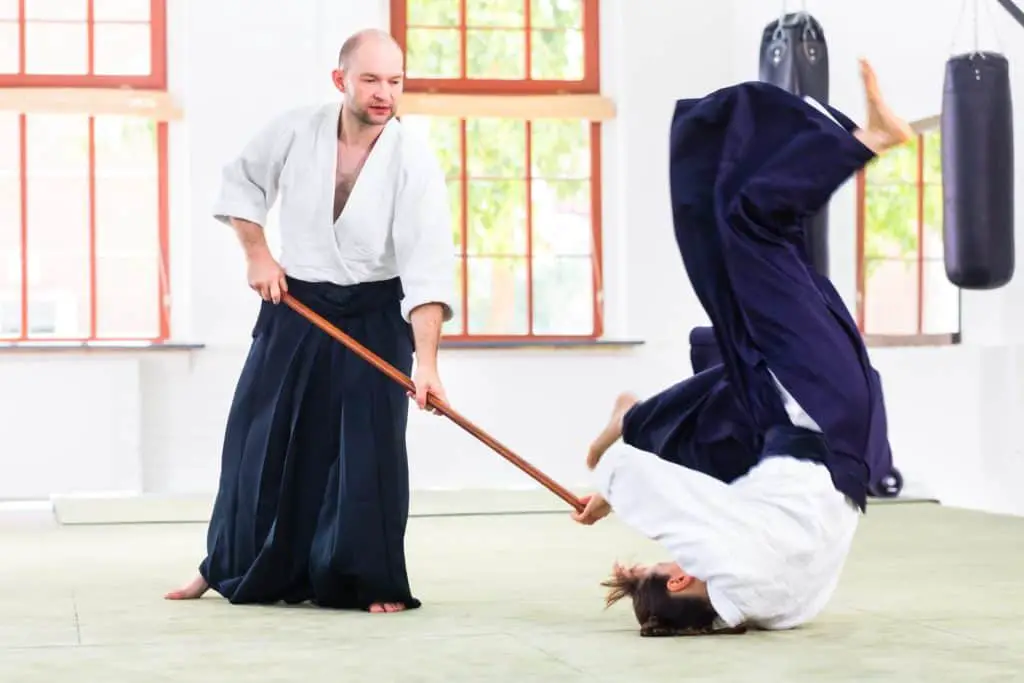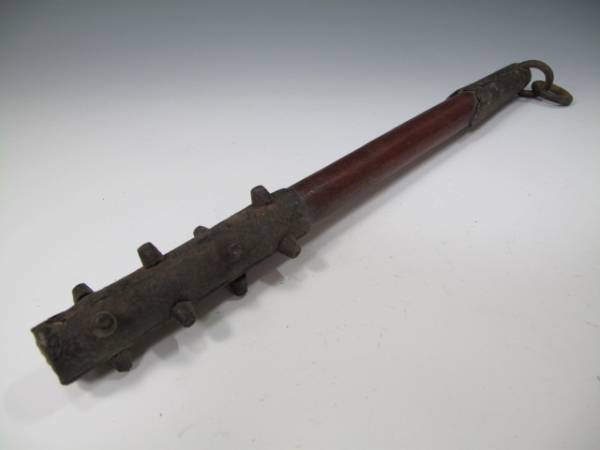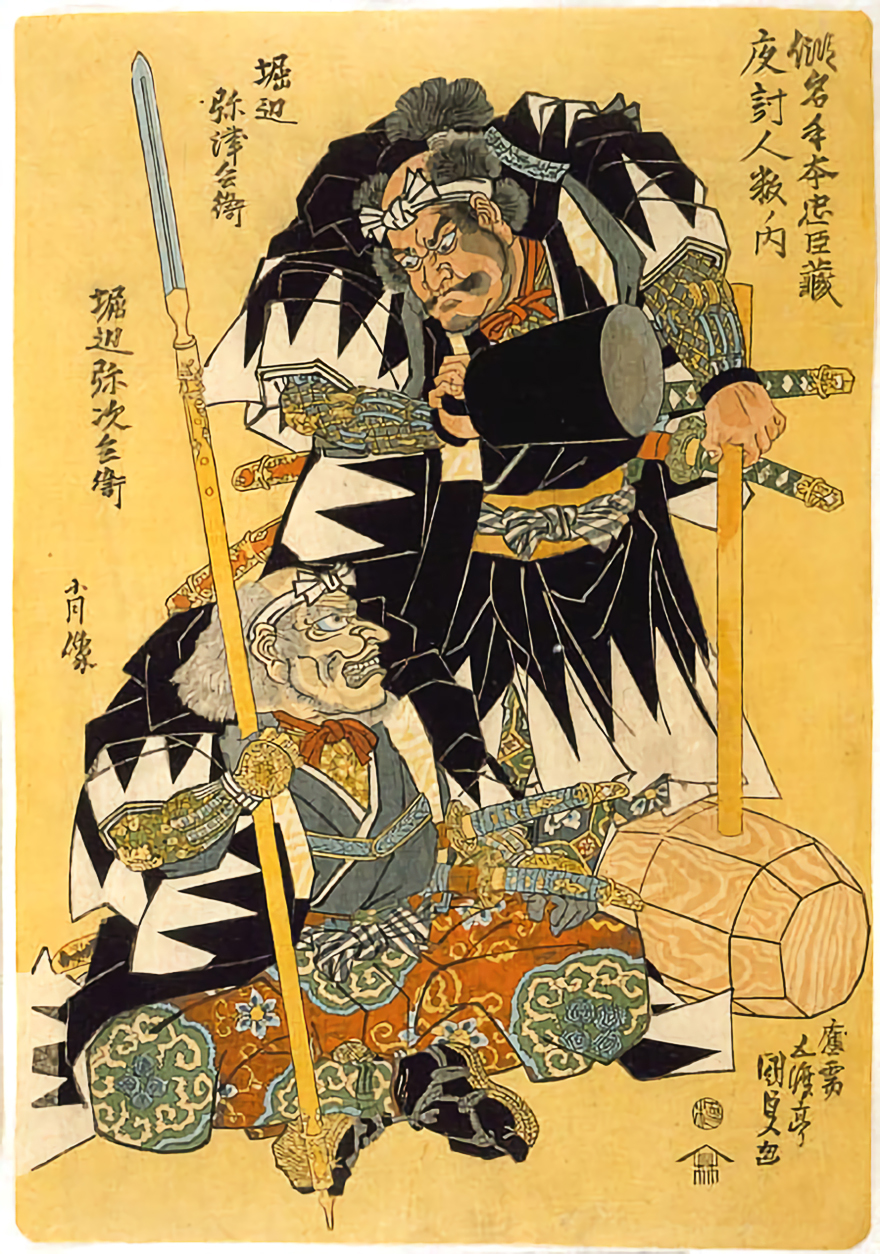
Japan has a long tradition of people hitting each other with sticks. Indeed, they have an entire martial art, bojutsu, devoted exclusively to it.
But, of course, the stick is the most rudimentary and fundamental of weapons throughout all human cultures throughout history.
Even today, being able to use a stick to defend yourself is considered one of the fundamental building blocks across many Japanese martial arts.
Over time, humans began to figure out ways of making their sticks more lethal. You will find no shortage of stick-like Japanese weapons that have been used throughout history.
One obvious variation was to add weight to one end of the stick to strike a heavier blow. The club, and later the mace, was born.
Japan has a range of weapons with different names that fit broadly into this category of modded-out sticks. We’ll go into them below.
What are the different types of maces in Japan?
Uchibo 打棒
In Japan, various sticks used as weapons fall under the category of “Uchibo 打棒”, which literally means “Striking Sticks”. Perhaps the most mace-like of these are kanabo, tetsubo, and ararebo. We’ve written something about each of those below.
Furi-zue 振杖
Furi-zue, are a family of stick weapons that had a chain with a weight attached that were most often used by police officers, security guards, or military in ancient Japan. The word “furi-zue” is derived from the Japanese words “furi” meaning “to swing” and “zue” meaning “staff”.
1) The kanabo 金棒, a large iron mace-club.

The kanabo, also called a kanasaibo, is a traditional Japanese stick weapon that is closest to what we could call a “mace” in English. It has a long handle that was more often two-handed, although single-handed pieces are also not rare. They may be heavier towards the top but were generally not heavily weighted in one particular place like many Western maces.
The kanabo was often encrusted with studs around the top half. Sometimes the studs would even take the form of spikes, but these tended to be less preferred due to their propensity to becoming lodged in an opponent’s armor.
The kanabo can be made from many different materials, such as metal or wood.
The Kanabo is a weapon utilized by many ranks of samurai warriors, or bugeisha “fighting experts.” The longer versions were particularly effective for use on horseback.
The Kanabo was used heavily during Japan’s feudal era; it was originally created to break through armor and crush opponents.
The disadvantage of using this Japanese-style mace was that you needed a long swinging ark and space to work in. This meant that they didn’t lend themselves so well to high-density, army-style formation combat.
You often see Oni-Demons pictured holding a kanabo as a symbol of their power. There is even a phrase in Japanese “に金棒” which means something like “to put fuel on a fire”, or take a bad situation and make it worse.
You can find a wealth of detailed kanabo pics on this forum.
1a) Tetusubo 鉄棒

One subset of kanabo is the “tetsubo”. “tetsu” means metal and “bo” means stick, so the name pretty much describes the implement – an all-metal stick used to give people a whack.
The obvious advantage of a metal testubo is its weight. Of course, this is also its drawback, as you need a lot of strength to wield and carry it. Some warriors even had servants whose job it was to carry the tetsubo for them.
If it was worn on a fighter’s person, it would be on their back, being too heavy to attach to the waist.
The other drawback is that even if you are strong enough to lift the thing up, you need a whole extra level of strength to swing the item with effective force and aim. Perhaps, for this reason, tetsubo tended not to be particularly weighted in any one area. This meant that whatever part of the staff made impact, you would do damage.
Given their weight, tetsubo were capable of crushing armor and stopping people in the tracks, no matter how well they had equipped themselves against arrows and blades.
1b) Ararebo

Shorter, one-handed kanabo. These were could be swung in a much more agile fashion, but compromised on sheer walloping power. As such, they were not as popular as the longer and heftier kanabo.
1C) Kanemuchi or aribo
kanemuchi or aribo were simpler stick-like weapons. The often took the form of a fairly plain metal rod.
2) The Chigiriki (契木)

The Japanese chigiriki is a wooden club on the end of a chain and is typically swung at various angles and speeds, depending on the style. The weapon can be used to strike, crush, or entangle an opponent.
The Chigiriki is composed of two parts that are connected by a rope or chain. The stick is called the “bo” and the other, which has a metal weight attached to it, is called the “kama”.
A simpler version would simply have the chain attached to the top of the stick, while other ones had a chain that would run through the tube at the center of the stick so that the chain could be retracted or released during combat.
The act of learning about and using chigiriki in combat is called Chigirikijyutsu.
The Chigiriki was used in the 荒木流 arakiryū、気楽流 kirakuryū、笹光流 sasa hikariryū、無拍子流 mu hyōshiryū、堤宝山流 tsutsumi hōzanryū、鏡新明智流 kagami shin meichiryū、戸田流 todaryū、初実剣理方一流 hatsu jitsu ken rikata ichiryū schools of martial arts combat.
3) Otsuchi 大槌

The Japanese Otsuchi mallet is a blunt instrument that is meant to be used either to knock down a door or, more rarely, as a weapon. It was typically made of wood and can come in various sizes depending on the user’s preference. The weight of the mallet could be around 2 pounds, which made it easy for an individual to swing with their bare hands. The handle should be between 12-35 inches long, but any length within that range would have done the job.
4) Shikomigatana

The Japanese shikomigatana, or hidden sword, is a blade that was originally hidden in the handle of another weapon like a cane or umbrella. “Shikomi” means “altered” and “gatana” is an alteration of the word “katana”, meaning sword.
People found ways to modify everything from long tobacco pipes, to fans usually used for keeping a person cool, to walking sticks.
These were traditionally used by spies to conceal their weapons without them being noticed by people around them.
After the edict came into force forbidding all classes of people, including samurai, from wearing swords, all manner of concealed weapons, or more or less lethally shaped sticks, became more popular.
You sometimes also hear these items being referred to as “shinobi zue”, meaning “stealth-stick” or “shinobi katana”, meaning “stealth sword”.
